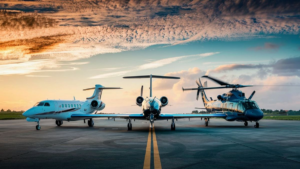When it comes to enforcing speed limits, many jurisdictions around the world employ various methods to ensure road safety. One of the more unconventional methods involves the use of aircraft to monitor and enforce speed limits on highways and other roadways. But what exactly does “speed limit enforced by aircraft” mean?
The Concept Explained
The concept of speed limit enforcement by aircraft involves the use of aircraft, typically helicopters or fixed-wing planes, to monitor vehicular speeds from above. These aircraft are equipped with specialized technology, such as radar or LIDAR (Light Detection and Ranging), which allows them to accurately measure the speed of vehicles on the ground.
How It Works
When a speed limit enforced by aircraft is in effect, law enforcement officers aboard the aircraft will patrol designated stretches of roadway. They will use their equipment to detect vehicles that are exceeding the posted speed limit. Once a speeding vehicle is identified, the aircraft will relay this information to ground units, who will then proceed to intercept the violator.
Benefits and Effectiveness
There are several benefits to employing aircraft for speed limit enforcement. Firstly, aircraft can cover large distances quickly, allowing them to monitor vast stretches of highway in a relatively short amount of time. This increased surveillance can act as a deterrent to speeding and improve overall compliance with speed limits.
Additionally, the vantage point from the air provides officers with a clear and unobstructed view of traffic, making it easier to detect speeding vehicles and track their movements. This aerial perspective can be particularly useful in areas where traditional ground-based speed enforcement methods may be impractical or ineffective.
Legal Considerations
It’s important to note that the use of aircraft for speed limit enforcement is subject to certain legal considerations. While the technology itself is highly accurate, law enforcement agencies must adhere to strict protocols to ensure the legality and admissibility of evidence obtained through aerial speed enforcement.
Furthermore, there may be limitations on when and where aircraft speed enforcement can be employed, as well as regulations governing the use of aircraft in populated areas.
In conclusion, the concept of speed limit enforcement by aircraft involves the use of aerial surveillance to monitor and enforce speed limits on roadways. While somewhat unconventional, this method can be highly effective in deterring speeding and improving overall road safety. By providing law enforcement with a unique vantage point and the ability to cover large areas quickly, aircraft speed enforcement plays a valuable role in maintaining order on our roadways.
Cost Considerations
Implementing speed limit enforcement by aircraft can come with significant costs. This includes the expenses associated with purchasing and maintaining aircraft, training personnel to operate them effectively, and integrating the necessary technology for speed detection and communication.
Moreover, there are ongoing operational costs such as fuel, maintenance, and personnel salaries. These expenses can add up, particularly for jurisdictions with limited budgets.
Public Perception
Public perception of speed limit enforcement by aircraft can vary. While some may view it as a necessary measure to promote road safety, others may perceive it as intrusive or excessive surveillance. Addressing public concerns and maintaining transparency about the purpose and implementation of aerial speed enforcement is essential to garnering support and cooperation.
Frequently Asked Questions
| Question | Answer |
|---|---|
| Is speed limit enforcement by aircraft legal? | Yes, but it is subject to certain legal considerations and regulations to ensure its legality and admissibility of evidence. |
| How effective is speed limit enforcement by aircraft? | Aircraft speed enforcement can be highly effective in deterring speeding and improving overall compliance with speed limits due to its ability to cover large areas quickly. |
| What are the primary benefits of using aircraft for speed limit enforcement? | The primary benefits include increased surveillance coverage, a clear aerial perspective for detecting speeding vehicles, and the ability to cover large distances efficiently. |
See also:






